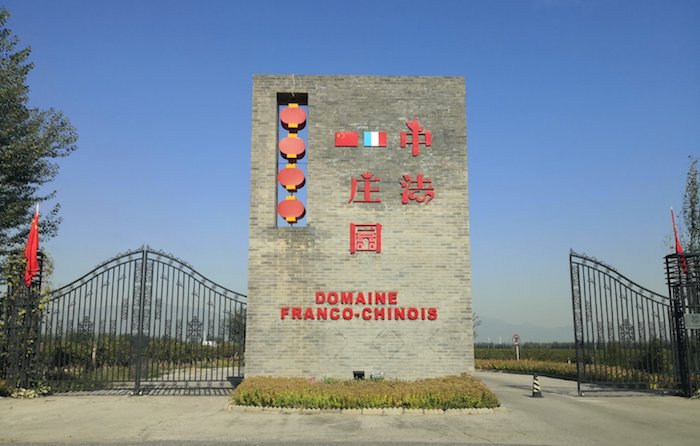Often deemed the world’s most influential wine competition, the Decanter World Wine Awards are entering their 20th year. Originally running as wine columns in newspapers around the United Kingdom, Decanter began publishing as a magazine for wine consumers in London in 1975. Today, the magazine is a trusted standard for wine buyers and the DWWAs remain among the most prestigious awards in the world of wine.
Therefore, one can imagine the elation when, at the 2011 DWWAs, the first Chinese wine won not only an award but a gold medal. Even more shocking was that the wine that won was not one of China’s storied leviathans but rather a remarkably young winery from a previously unknown region. According to Decanter, the Ningxia region had to be added for the wine to be submitted to the competition.
The victorious wine was the 2009 vintage of Jia Bei Lan, grown on cloned vines from Hebei province that were planted just nine years before. This month, Jia Bei Lan’s Zhang Jing shares her unlikely introduction to winemaking and a glimpse at the passion and expertise that makes her one of China’s most revered winemakers.

Zhang Jing is the first Chinese winemaker to win a gold medal in Decanter. Image via Jia Bei Lan
Zhang graduated from university in 1998 and, although she majored in forestry, one class on viticulture landed her a job. Her parents didn’t drink wine and she wasn’t particularly fond of it herself at the time. She recalls the first red wine she tried was from Xixia King which remains to this day Ningxia’s largest winemaking company.
We interrupt Zhang’s story to ask what we believe to be a very pertinent question. She chuckles when we inquire if she thinks she would have enjoyed her first sip of wine had it been the 2009 Jia Bei Lan. “At that time, I don’t think I would have liked the taste,” she admits. “As I learned more about wine culture, winemaking and proper wine tasting then I began to love wine. I had really good opportunities to connect with experts from France. They could simply smell a wine and tell, for example, that the temperature of fermentation was too high.”
She jokes that their noses were bigger than hers but also points to a fascination and inspiration derived from their expertise. They had an ability to recognize the aromas of strawberry and cherry, as well as problems within the fermentation process — true masters.
When Zhang landed her first job after graduation, the Ningxia wine industry was just starting. At that time there were only six or seven wineries, mostly engaged in producing bulk wines to be bought and sold under different brand names. The first job that would lead Zhang to become the godmother of Ningxia wine was, itself, fairly innocuous. It was a position in a government office tasked with connecting wineries with grape growers.
It was at this first job that Zhang would meet some extremely influential figures in the story of Ningxia wine.
Professor Li Hua established what is often called the Wine College at Northwest Agriculture and Forestry University (西北农林科技大学葡萄酒学 院). After getting his Ph.D. in winemaking in France, he returned to China to set up the Wine College. The first step was to travel around China and identify the regions that would be suitable for growing good wine grapes. Zhang credits Dr. Li Hua with convincing the Ningxia government to focus on wine.
In 1996, the government sent delegations of agriculture ministers, local Ningxia winemakers and university professors to France so that they could return with the required knowledge. At that point, the government had a very narrow view that wine would be a popular product.
They never envisioned the surrounding culture of food and wine tourism that would shape Ningxia in the following decades.

The Sino-French viniculture demonstration zone has since become its own winery called Domaine Franco Chinois. Image via @陆江Maxime/Weibo
Li Demei was Chief Winemaker in a Sino-French viniculture demonstration zone in Hebei province. In 2000, Li planted some cloned vines of Bordeaux grape varieties on a small farm in the foothills of the Helan Mountain range.
Over the next few years, Zhang would travel to France, Australia and America to expand her knowledge of winemaking. In 2005, Zhang and her partners created Helan Qingxue (named after the sunshine glimmering off the snow atop the Helan Mountains) and made the first vintage with the Bordeaux grapes from Li Demei’s plot of land.

The vineyard, Helan Qingxue, is named after the snowy peaks of the nearby mountain range. Image via Jia Bei Lan
This part of Zhang’s story catches us off guard as we are constantly hearing wine salespeople boast about the 40-year or 100-year-old vines from which their wines are made. “I’ve visited many 100-year vineyards and they actually have very small production,” Zhang tells us. “The age of the vines is just a marketing tool as old vines produce very little fruit. The most important thing is the vineyard management and that the vines are healthy.”

Zhang explains that vine health is more important than vine age. Image via Jia Bei Lan
Zhang’s award-winning vines were planted in 2000, just nine years before they would make Chinese wine history.
Transplanted nursery grapevines consist mainly of a trunk and root bundle. “In the first year, the vine expands its roots,” Zhang continues, “and in the second year, it grows the canes. In the third year, you can just get some small fruits so the first time you harvest grapes is in the fourth year.”
The grapes that won the gold medal were a blend of 80% cabernet sauvignon, 15% merlot and 5% cabernet gernischt. The production at that time was a modest 20,000 bottles.
A decade on, we were able to purchase a 2017 Jia Bei Lan Reserve for RMB698 on JD. For RMB398, one can acquire the Jia Bei Lan Estate wine.
Wondering how a ’reserve wine’ is selected, we ask Zhang if it’s a scientific process, taking advantage of the advanced technology available for winemakers in Ningxia. We recall how Muti Mo lab tests sugar content and pH for his pétillant naturel.
“In the vineyard, we have many different blocks and, after so many years, we have a lot of experience. We know which blocks produce grapes with thick skins, smooth tannins and deeper aromas. These blocks will be harvested and fermented separately in different tanks. Once the wines are
barrelled then we taste and rank the barrels. Lastly, we taste the wines when they have been aged in oak and do the final blending to produce the Grand Reserve, Reserve and Estate wines.”

Certain blocks are selected to produce the Grand Reserve and Reserve wines. Image via Jia Bei Lan
This process is done entirely by the winemakers and their masterful noses and palates. Zhang tells us that they don’t do any lab testing for the barrel ranking and the differences in winemaker preference shine through in the personality of each vintage.
Jia Bei Lan has expanded its production capacity to between 60,000 to 70,000 bottles per year. There are 23 hectares of vineyard and they have begun experimenting with new methods and varietals. They now grow malbec, marselan and pinot noir as well as chardonnay. Where traditionally they used packaged French yeast, they produced chardonnay and merlot with natural yeast from the terroir of their vineyard. They have even explored carbonic maceration, a modern process where the initial fermentation occurs by placing whole bunches of intact grapes in a tank that is then filled with CO2 gas. This causes the grapes to begin fermenting intracellularly without breaking the skins. Imagine each grape becomes its own tiny barrel, naturally fermenting from the enzymes trapped within its tissue when it was removed from the vine.

Zhang is very hands-on with her winemaking. Image via Jia Bei Lan
Zhang’s passion for winemaking gives rise to some of this experimentation, but change is also a necessity. “In 2019, the last time I traveled outside the country, I visited Piedmont, Italy. I had a chance to attend a small seminar among winemakers at Gaia, one of Italy’s most famous wineries. The subject of the talk was how Gaia is adapting their wines in the face of global warming. Gaia is always leading the wine industry of their region and their insight extends well into the future.”
Rising temperatures have a massive impact on the consistency of winemaking. Zhang explains that, in 2005, the alcohol by volume of their flagship wine was 12.5%. By 2009, the gold medal wine was up to 13.5%. Despite being made from the same method, the same grapes and the same plots of land, the alcohol content has been steadily rising. The bottle we bought of 2017 Reserve sits at 14.5% abv. “I like elegant wines,” Zhang laments, “and some wineries in Ningxia are reaching 16%.”
Climate change poses new challenges and Zhang has to experiment with different ways to beat the heat. As hotter vines produce higher sugar content and thus higher alcohol, keeping the grapes just slightly cooler can make a huge difference.

Canopy management is the process of exposing the bunches of grapes to sunlight to ripen. Image via Jia Bei Lan
“Canopy management is very complicated. Before we would remove leaves to fully expose all the fruits to the sunlight. Canopy management has become crucial to improve the cluster environment by leaving some canopy to shade the grapes while still providing airflow to reduce humidity.”
Given the critical acclaim, our expectations for the Jia Bei Lan Reserve were high — and we were not disappointed. It is a voluptuous yet perfectly balanced cabernet blend with velvety tannins and a deep cherry aroma. On the nose is an elegant smokiness that reminds us of Amomum tsao-ko, a variety of black cardamom grown at high altitudes of Yunnan and dried over a fire. Not often is every sip of wine followed by a gasp of adulation. Any opportunity to impress a wine aficionado, Chinese or otherwise, would be an ideal occasion for this wine.

Scan the QR code below to find Jia Bei Lan wines:

Cover Image via Jia Bei Lan























0 User Comments